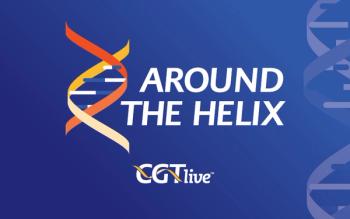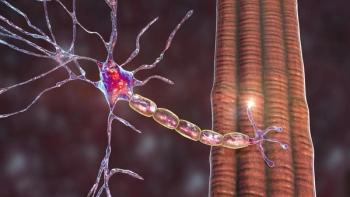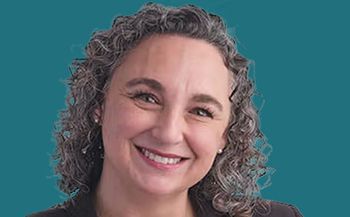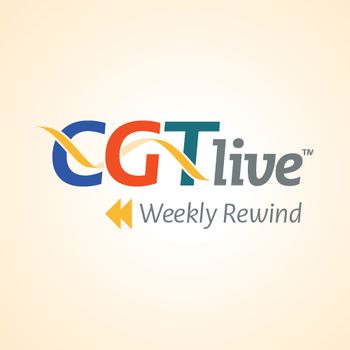
Jeffrey Chamberlain, PhD, on the Import of Early Intervention in DMD
The McCaw Endowed Chair of Muscular Dystrophy at University of Washington, discussed how comprehensive care for DMD patients involves early diagnosis, steroid treatment, consideration of mutation-specific therapies, and more.
Several advanced therapeutics are now available for the treatment of Duchenne muscular dystrophy (DMD), including adeno-associated virus (AAV) vector-based gene therapy and exon-skipping therapy, both in the commercial setting and through clinical trials. Because DMD is a progressive disease, early diagnosis and treatment is of key importance.
In an interview with CGTLive®'s sister site,
CGTLive: What are some important considerations for patients being treated for DMD?
Jeffrey Chamberlain, PhD: An important thing is obviously to be going to a good clinical care team and having as many aspects of your disease monitored as possible. That varies, unfortunately, a lot based on where you live, what the availability of local care is, and things of that nature. For many years, I think a lot of kids were seen by pediatricians that weren't able to offer a lot of options in terms of treatment scenarios. At some of the major medical centers, you can get a whole team involved to look at general neurology, muscle weakness, cardiac function, respiratory function, behavioral issues, and things of that nature. I think the most important thing is to get clinical care, get diagnosed early, and see what your doctor thinks is the best course of action.
At present, certainly steroids seem to be a very important option. It's something that can be used in essentially all kids, regardless of their mutation. As we discussed earlier, you obviously have to monitor how well they tolerate the steroids and whether they continue them, what the best dosing regimen may be (weekly, daily?), things of that nature—but that's certainly a good place to start.
Beyond that, you need to look a little bit at what mutation they have (if you can figure that out, which is not that difficult to do these days) and decide early on what treatment option you might want to have. Certain mutations, particularly deletion mutations, are now amenable to exon skipping. So depending on what mutation an individual has, they can consider getting involved in an antisense oligonucleotide trial for exon skipping. I will say that the exon skipping drugs themselves are—if you compare them to the gene therapy drugs—you still have this issue of not really delivering as much as you'd like to and not being able to make a lot of dystrophin. Most exon skipping drugs that are on the market right now only make very low levels of dystrophin, and again that can have a minor impact on the disease, but we certainly would like to go well beyond that. So we'll have to see; there's new techniques coming out: We heard at the Muscular Dystrophy Association (MDA) Annual Scientific and Clinical Conference last March that there's some breakthroughs on the horizon in terms of the delivery of antisense oligos for exon skipping. Some companies are now reporting significantly higher levels of dystrophin being produced than what we'd seen even a year ago. We need more data on that and it's going to be interesting to see how that progresses, but that certainly is an option that's growing in importance.
There were also some reports at the MDA meeting that some of the kids on these exon skipping drugs may not show significant changes in their overall progression or level of muscle weakness in the first year or so, but that in years 2, 3, and 4, they can start to show increasing benefit and certainly more and more measurable differences from baseline or from kids that are not on those exon skipping drugs.
The other option, of course, is gene therapy. Gene therapy depends a little bit on the mutation itself. Going into this, when the gene therapies were being developed people generally felt that it didn't matter what your mutation was—that a gene replacement approach, where you're bringing in a synthetic microdystrophin that can produce amounts of this miniaturized dystrophin—that that's something that would work in kids with any mutation. In general, that should be true, except that we're now seeing rare cases of severe adverse events where boys that have mutations in certain regions of the gene can sometimes develop an immune response against this microdystrophin protein that's being delivered into their muscles. That's something we need to monitor very closely. Unfortunately, the consequence of that is that the patients that have mutations in this part of the gene that has led to these immune issues—those kids are being excluded from enrollment in these clinical trials. Unfortunately, that's a modest number of kids. I'm not sure what the exact numbers are, somewhere in the range of 10% to 15% that are ineligible.
Certainly the other thing that can make one ineligible for a gene therapy trial is if they have been exposed to the natural, wild type adeno-associated virus itself, which is a fairly common virus in the human population, then that can induce preexisting immunity, essentially vaccinating you against the vector so that you're not eligible for a gene therapy trial.
So there's certainly a lot of exclusion criteria that come up that keep kids out of these gene therapy trials. Some of those kids will be amenable to the exon skipping trials, but only if they have certain types of mutations. Unfortunately, the remainder of the boys don't really have a lot of options in terms of advanced therapies.
This transcript has been edited for clarity.
Newsletter
Stay at the forefront of cutting-edge science with CGT—your direct line to expert insights, breakthrough data, and real-time coverage of the latest advancements in cell and gene therapy.











































